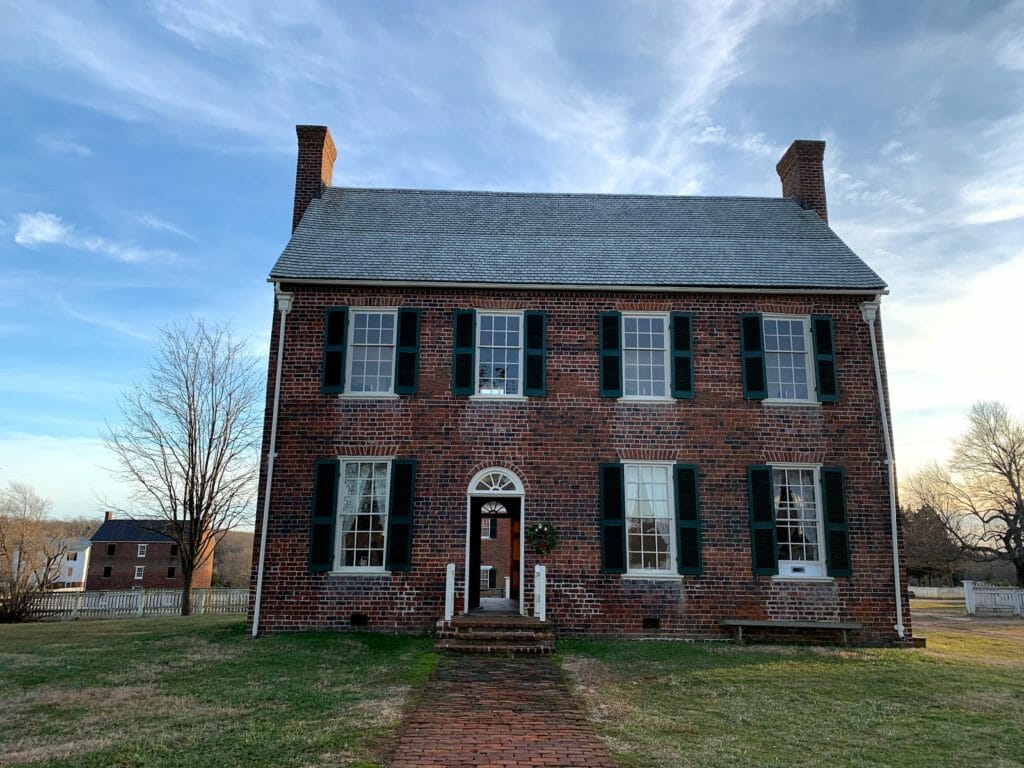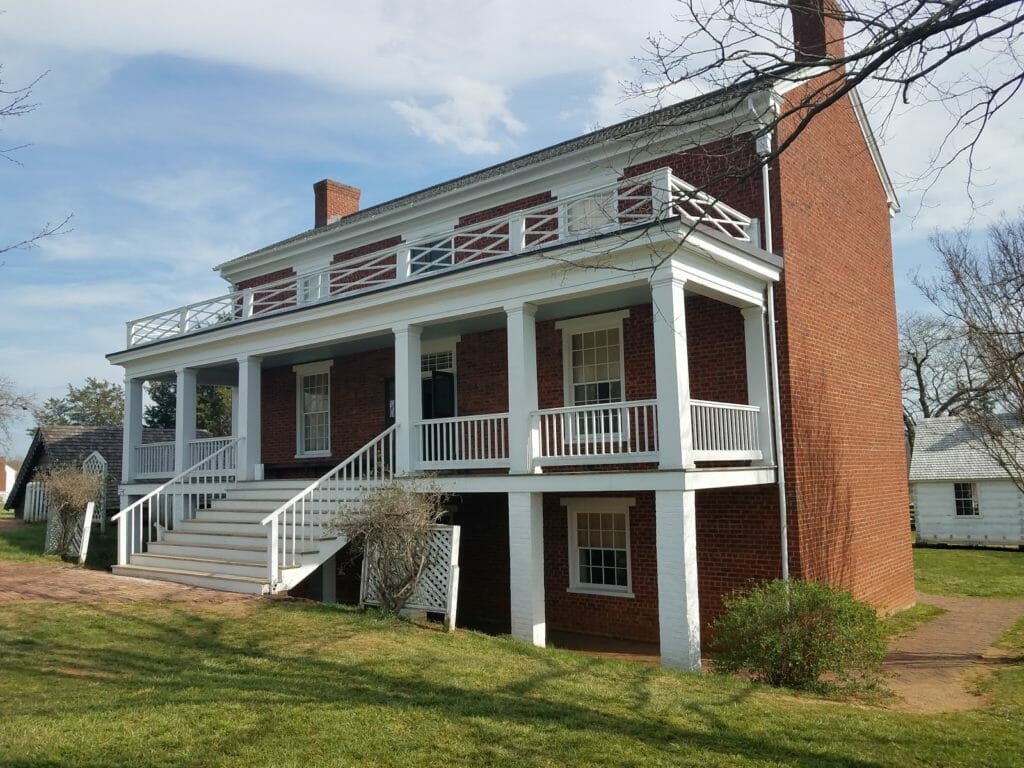Table Of Content

A walk through the fields could flush up a variety of sparrows including grasshopper, vesper, savannah and song sparrows. These same fields fill with numerous butterflies in spring and summer with stately monarchs and variegated fritillaries being the most numerous. Sign up to receive the latest NPF news,information on how you can support our national treasures, and travel ideasfor your next trip to the parks. Surrender ceremony events took place over the next three days, ending with the Confederate infantry stacking their arms on April 12. As you plan your visit, check our Operating Hours and Seasons, and consider taking in a Ranger-led talk, living history program, or walk on one of our many hiking trails.
Edit My Account
The Battle of Appomattox Court House - Appomattox Court House National Historical Park (U.S - National Park Service
The Battle of Appomattox Court House - Appomattox Court House National Historical Park (U.S.
Posted: Mon, 20 Jul 2020 07:00:00 GMT [source]
The Confederate commanders decided to try to break through the cavalry screen, in the hope that the horsemen were unsupported by other troops. Grant anticipated Lee’s attempts to escape, however, and ordered two corps (XXIV and V) under the commands of Maj. Gen. John Gibbon and Bvt. Maj. Gen. Charles Griffin to march all night to reinforce the Union cavalry and cut off Lee’s escape. The McLeans left Appomattox Court House and returned to Mrs. McLean's Prince William County, Virginia estate in the fall of 1867. When Wilmer McLean defaulted on repayment of loans, the banking house of Harrison, Goddin, and Apperson of Richmond, Virginia brought a judgment against him, and the "Surrender House" was sold at public auction on November 29, 1869. The house was purchased by John L. Pascoe and apparently rented to the Ragland family formerly of Richmond.
Preservation
It was in these fields and hills that the respective armies had their headquarters and camped while awaiting the negotiated terms of the Confederates’ surrender and their eventual release home. When standing at the village and scanning the surrounding hilltops, it’s almost possible to travel back to the time when this area was covered with tens of thousands of battle-weary troops. The Civil War came to Appomattox County in April 1865, when Confederate General Robert E. Lee retreated across Southside Virginia. Following the war, the courthouse building burned in 1892, and the county seat was moved two miles east to Appomattox Station (now Appomattox). The move precipitated a period of decline for Appomattox Court House, with the houses either rented or abandoned.
Chinese-Americans in the Civil War
Following reconstruction of the courthouse in 1964, the National Park Service visitor center was moved into the building. This quiet village and surrounding landscapes once composed an average Virginia stage road town with a county courthouse at its center. Its name is now immortalized for the tentative peace brought to the nation from Robert E. Lee's surrender of the Army of Northern Virginia to Ulysses S. Grant's Federal armies. The Appomattox Court House village landscape is comprised of approximately ninety acres at the core of the Appomattox Court House National Historical Park in Appomattox County, Virginia. The broader park landscape includes the nineteenth century village surrounded by an agricultural matrix of open pastures and forested woodlands.

Appomattox Court House National Historical Park is comprised of many of the village's original historic structures, along with several reconstructed buildings on approximately 1,700 acres in rural Virginia. The Wilmer McLean home, where the surrender was signed, is open to the public. Begin your visit at the visitor center in the reconstructed courthouse building in the center of the historic village. There you can get information and recommendations for your visit.
The rural landscape is also significant in areas of architecture and conservation, containing late 18th and early 19th century structures that represent the use and commemoration of the site. Thousands of soldiers were captured at the battles of Five Forks, the Petersburg Breakthrough, and especially Sailor’s Creek – where about a quarter of the army surrendered after being cut off from Lee. Grant's forces harried the Rebels constantly as they continued to retreat west along their tenuous supply lines. Desertion was rampant among the starving and beleaguered soldiers, and Confederates took heavy casualties at several battles. The National Park encompasses approximately 1,800 acres of rolling hills in rural central Virginia. Thesite includes the McLean home—where Lee made his formal surrender—andthe village of Appomattox Court House, Virginia, the former county seat for Appomattox County.
Hiking Trails
Here on April 9, 1865 General Robert E. Lee of the Army of Northern Virginia surrendered his men to Ulysses S. Grant, General-in-Chief of all United States Forces, signaling the beginning of the end of the Civil War. The National Park Service has rebuilt the town to look much like it did in 1865 and has developed an extensive interpretive program highlighting the lifestyles of the families living in the village at that time. In 1930 Congress passed a bill providing for a monument at the site of the old Appomattox courthouse. The monument was never built, but the idea of memorializing the surrender events that occurred in the small village stayed alive.
The American Civil War Museum–White House of the Confederacy
Though the park consists of nearly 1700 acres, most visitors focus on the old village. Explore the places beyond the village core that teach about military activities that occurred here in 1865 and about the people and county that played host to these events. General Grant's Headquarters is the first stop in learning what happened here in Appomattox Court House on April 9, 1865. Plan a national park trip to the scene of the end ofthe Civil War and experience history with your family. Show your pride in battlefield preservation by shopping in our store.
The Richmond-Lynchburg Stage Road was established through what was to become Appomattox Court House in 1809. Capitalizing on location, Alexander Patteson opened the Clover Hill Tavern along the road in 1819. In 1845, when Appomattox County was created, his tavern was used for official business until the county courthouse was completed in 1846. Following construction, the village, which had been known as Clover Hill, was renamed Appomattox Court House. The Appomattox Court House cultural landscape marks the beginning of the country's transition to peace and reunification following four years of Civil War. This is the site of General Robert E. Lee's surrender to Lt. General Ulysses S. Grant in April, 1865.
Today the structures in the village look much as they did in 1865. Walk the old country lanes where Robert E. Lee, Commanding General of the Army of Northern Virginia,surrendered his men to Ulysses Grant, General-in-Chief of all United States forces, on April 9, 1865. Imagine theevents that signaled the end of the Southern States' attempt to create a separate nation.
Please be aware that due to their historic nature, many buildings in the park have limited accessibility or are inaccessible. See our accessibility page for more information and accommodations. The park preserves some original and some reconstructed buildings, as well as the character of the original town. On April 9, 1865, the surrender of the Army of Northern Virginia in the McLean House in the village of Appomattox Court House, Virginia signaled the end of the nation’s largest war. Could the nation survive a civil war intact, and would that nation exist without slavery? Appomattox Court House National Historical Park sits atop one of the most important historical sites in American history.
The American Battlefield Trust and our members have saved more than 512 acres at Appomattox Court House Battlefield. Have the latest local news delivered every afternoon so you don't miss out on updates. Learn MoreEach of these articles gives a perspective on the Civil War era at Appomattox Court House. Use your reading comprehension skills to answer the questions.Learn about the history of the village at Growth and Decline of Appomattox Court House. The soldiers of the Army of Northern Virginia were issued parole passes for safe passage home, free food and free transportation.
The phenomenon was not limited to the upper echelons – soldiers of all ranks from both armies tried to take a piece of their experience home with them. Northerners bought Confederate dollars from the Rebels, and soldiers tore up their own regimental flags as souvenirs. The surrender was a highly emotional affair for the participants, many of whom had been fighting for four years. Soldiers on both sides cheered and cried – often at the same time – upon hearing the news. On April 8, the Confederates discovered that the army’s escape was blocked by Federal cavalry.
The official copies of the surrender terms signed by Lee and Grant were drafted by Grant’s personal military secretary, Lt. Col. Ely S. Parker. Parker was a Seneca Indian Chief from New York who had studied law. He became friends with Grant after the Mexican-American War, and Grant secured an officer’s commission for him.
The formal ceremony and collection of weapons took place on April 12 under the supervision of Brig. Gen. Joshua Lawrence Chamberlain. As ranks of Confederate soldiers came forward to hand over their weapons and flags, Chamberlain ordered his men to salute their defeated adversaries as a gesture of respect. Other witnesses also reported that interactions between Yankees and Rebels were almost entirely kind and friendly. Heavily outnumbered and low on supplies, Lee’s situation was dire in April 1865. Nevertheless, Lee led a series of grueling night marches, hoping to reach supplies in Farmville and eventually join Maj. Gen. Joseph E. Johnston’s army in North Carolina.
No comments:
Post a Comment